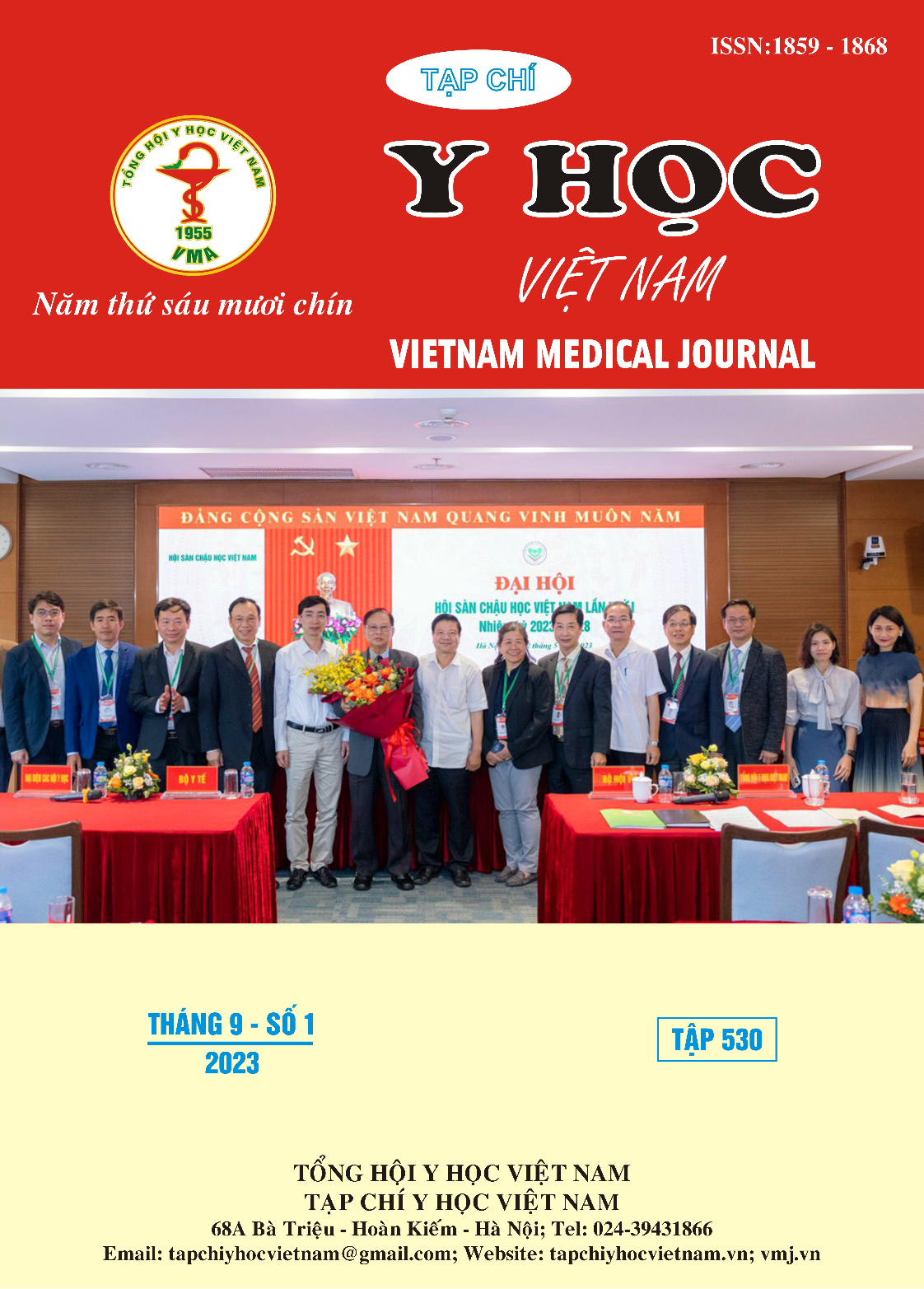RESEARCH CHARACTERISTICS OF ANTIBIOTIC RESISTANCE CHARACTERISTICS OF COMMON GRAM-NEGATIVE BACTERIA CAUSING SEPSIS AT NGHE AN GENERAL FRIENDSHIP HOSPITAL IN 2022
Main Article Content
Abstract
Background: Gram-negative bacteria are the common cause of sepsis and have increasing antibiotic resistance and multi-resistance tends to increase. Providing information on antibiotic resistance of Gram-negative bacteria is essential for clinical practice. Objective: To study antibiotic resistance characteristics of common gram-negative bacteria causing sepsis at Nghe An General Friendship Hospital. Subjects and methods: A cross-sectional descriptive study, 428 strains of Gram-negative bacteria causing sepsis were collected at Nghe An General Friendship Hospital from 1/2021 to 12/2021. Results: E. coli was resistant to all tested antibiotics: highest with Ampicillin 89.6%, lowest with Fosfomycin 3%, the rate of ESBL-producing is 54.5%. K. pneumoniae was resistant to all tested antibiotics: highest with Ampicillin/Sulbactam 57.1%, lowest with Fosfomycin 11.4%, the rate of ESBL-producing is 15.9%. Burkholderia pseudomallei has not recorded resistance to Carbapenem, Ceftazidime, and resistance to Cotrimoxazone 27.6%. Regarding the type of multi-antibiotic resistance, E. coli had the highest rate of multi-resistance at 80.6%, followed by K. pneumoniae 59.7%. K. pneumoniae has an expanded resistance rate of 23.6%, higher than E. coli (9.3%). MDR, XDR of Burkholderia pseudomallei have not been recorded. Conclusion: The E. coli strain in our study has a relatively high rate of antibiotic resistance and multi-resistance. The proportion of K. pneumoniae with extended resistance is higher than that of E. coli. Multiple resistance and extended multidrug resistance of Burkholderia pseudomallei have not been recorded
Article Details
Keywords
Gram-negative bacteria, anti-blood, antibiotic, resistant, multi-resistant
References
2. Nguyễn Phương Kiệt, Richart K. Root và Richart Jacobs (1995), "Nhiễm trùng máu và sốc nhiễm trùng”", Các nguyên lý y học nội khoa., vol. Tr. 118-127. Nhà xuất bản Y học.
3. Hoàng Thị Thanh Thủy và các cộng sự., “Căn nguyên vi khuẩn gây nhiễm khuẩn huyết tại Bệnh viện Bệnh Nhiệt Đới Trung Ương năm 2012,” Tạp chí Y học Việt Nam, p. 5(2), tr. 89-92., 2013.
4. J.-L. Vincent et al., “Sepsis in European intensive care units: results of the SOAP study,” Crit Care Med, vol. 34, no. 2, pp. 344–353, Feb. 2006, doi: 10.1097/ 01.ccm.0000194725.48928.3a.
5. Mai Lan Hương, “Căn nguyên gây nhiễm trùng huyết và mức độ kháng kháng sinh của vi khuẩn phân lập tại Bệnh viện Bạch Mai từ 01/01/2011 đến 30/06/2011,” Đại học Y Hà Nội, 2011.
6. V. Q. Dat et al., “Bacterial bloodstream infections in a tertiary infectious diseases hospital in Northern Vietnam: aetiology, drug resistance, and treatment outcome,” BMC Infect Dis, vol. 17, no. 1, p. 493, Dec. 2017, doi: 10.1186/s12879-017-2582-7.
7. P. Sawatwong et al., “High Burden of Extended-Spectrum β-Lactamase-Producing Escherichia coli and Klebsiella pneumoniae Bacteremia in Older Adults: A Seven-Year Study in Two Rural Thai Provinces,” Am J Trop Med Hyg, vol. 100, no. 4, pp. 943–951, Apr. 2019, doi: 10.4269/ajtmh.18-0394.
8. E. Garza-González et al., “A snapshot of antimicrobial resistance in Mexico. Results from 47 centers from 20 states during a six-month period,” plos One, vol. 14, no. 3, p. E0209865, 2019, doi: 10.1371/journal.pone.0209865.


